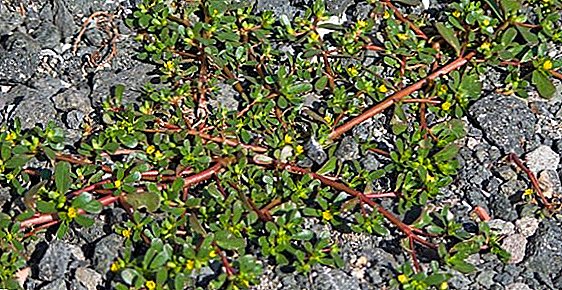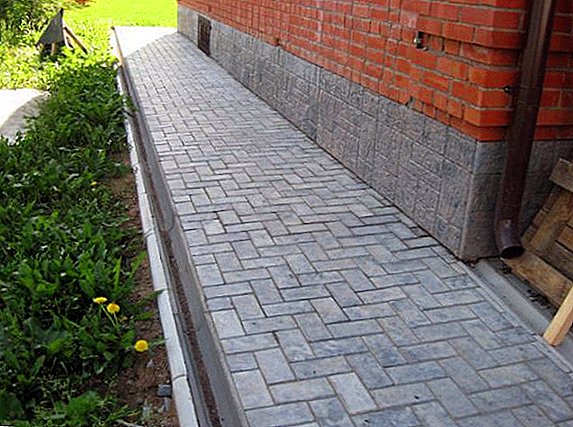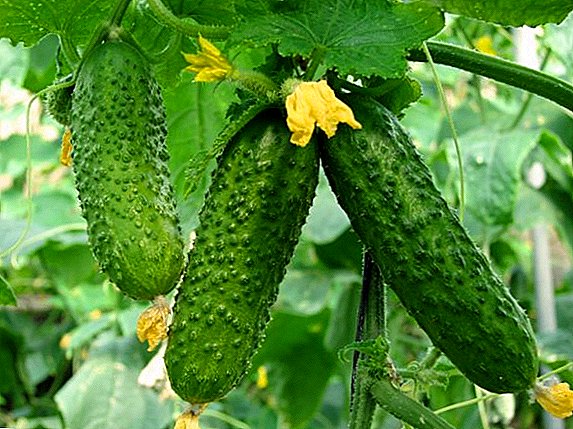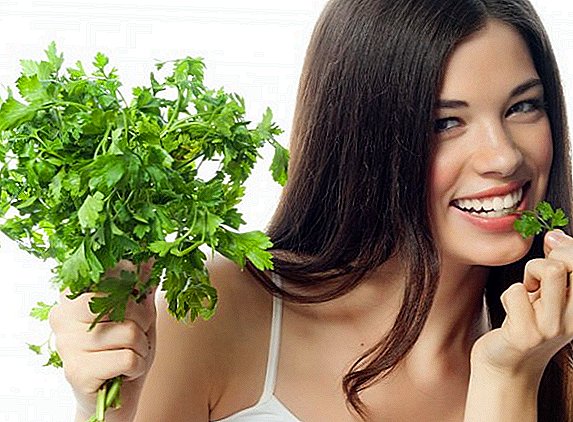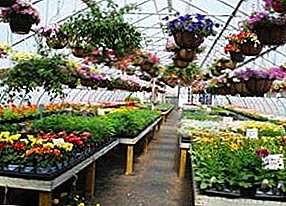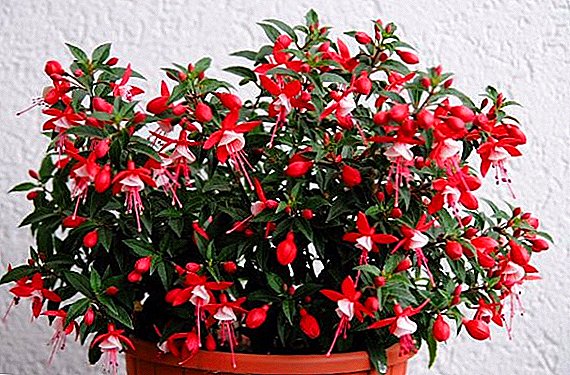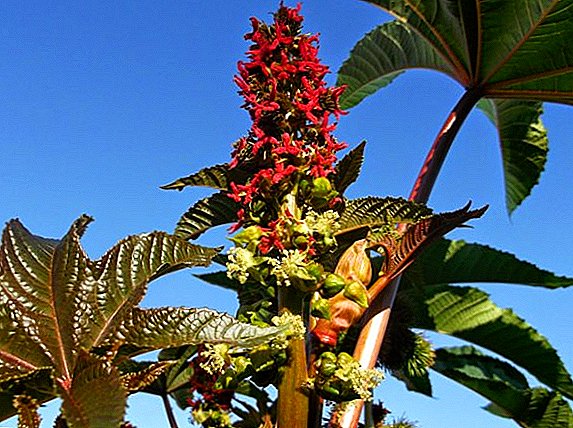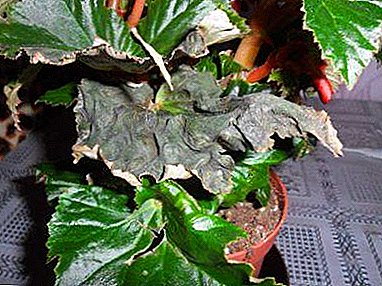
Begonia is one of the most popular flowers. Her flowers are magnificent, so a true connoisseur of exotic plants necessarily has in her collection several varieties of this wonderful plant. From a scientific point of view, it is an annual or perennial plant, which belongs to the flowering section, dicotyledonous class, pumpkin color order, begonian family, begonia genus.
In general, the care of begonia is not difficult, but any mistake can lead to plant disease. The name owes to Michel Begon, the governor of Haiti, who organized scientific research on the flora of the Antilles in 1687.
Flowering features
Begonia blooms in summer and autumn, and the room does not fall down until December. Inflorescences consist of several small, medium or large flowers. Begonia is rich in colors: red, yellow, pink, orange, white. In addition to the monochromatic colors, there are flowers with edging of various shades along the edges of the petals. On the types of begonias, we told in a separate article.
Description of buds
The flowers resemble peony buds, carnations, or roses and consist of 2 to 5 petals, in some their number reaches 6 to 8. Collected in racemes of axillary inflorescences, buds are formed at the very tips of the shoots. Begonia blooms brightly and abundantly, and the flowers themselves delight in their diversity.
Why a plant sheds leaves and flowers - the main reasons
Why does the plant disappear? In general, the care of begonia is not difficult, however any mistake can lead to plant disease, dropping leaves and buds. To avoid this, you must carefully monitor the condition of the flower, and follow the following recommendations:
 The inconsistency of the conditions of the plant - this is one of the most common causes of abscission of buds.
The inconsistency of the conditions of the plant - this is one of the most common causes of abscission of buds.In nature, begonia lives in the subtropics and tropical rainforests, but the home air is too dry. To begonia not sick, the plant should be properly moistened:
- Water must not get on the leaves, the point of growth, and especially on the flowers.
- Air humidification is possible by spraying water near a flower.
- Do not allow water to stagnate in the pan, it can lead to the inflammation of the roots.
- Begonia should be watered often, pouring water on the edge of the pot.
- Regarding lighting and heat - the direct rays of the sun are contraindicated in the plant.
They can cause burns on the foliage.
- South-Eastern and South-Western window-sills are the best place for a flower, however, and it is recommended to dim them in hot weather.
- The temperature of the air in which the begonia will feel comfortable, in the summer - 20-22 ° C, in the winter - 16-18 ° C. If the flowers dry, the leaves wither, and the color changes to red - all these are signs that the plant is hot.
- From time to time, begonia may lack nutrients.
The ideal soil is a mixture that contains in equal proportions turf, coniferous and larch soil, with the addition of sand and peat. Such combination promotes good flowering.
- If the leaves of the plant change their color to lighter, and the buds fall off - this is a sign of soil depletion. It is necessary to make complex mineral fertilizers. During the flowering period - once in two weeks, in winter - once in one or two months.
- Mineral blends should be alternated with organic.
- To bloom was abundant, avoid nitrogen fertilizers, as they contribute to the growth of foliage, and inhibit the formation of buds. During flowering, begonias need microelements, potassium, phosphorus. How to achieve beautiful buds and why it does not bloom, read this article.
- Another cause of abscission of buds and flowers are various rotten processes and fungal diseases.
 Most often this happens as a result of high humidity and temperature changes. Sometimes fungal spores are transmitted by harmful insects. Gray rot and powdery mildew - the most common diseases of begonias, which lead to dropping flowers.
Most often this happens as a result of high humidity and temperature changes. Sometimes fungal spores are transmitted by harmful insects. Gray rot and powdery mildew - the most common diseases of begonias, which lead to dropping flowers.The rot is manifested by light watery spots on the buds, leaves and tips of the shoots. Against the background of a general weakening of the plant, the buds begin to fall off first, at the points of attachment to the branch.
If only the inflorescences break off and the pedicels remain, then most likely the cause is powdery mildew disease. Urgent begonia treatment with appropriate solutions is required.
Treatment solutions:
- Copper-containing fungicide (Bordeaux mixture) or solution that can be prepared at home. It consists of: copper sulfate (2 grams) and laundry soap (20 grams), dissolved in one liter of water.
- If the disease progresses and the condition of the plant worsens, it should be treated with a 1% solution of "Fundazole".
- Spider mites and aphids are also a possible reason why the plant drops buds. Pests parasitize on the leaves, sucking the juices out of them. This leads to a weakening of the begonias. With regular care, the appearance of insects can be immediately noticed, and remove them manually, in order to avoid complications. Otherwise, you will have to resort to treatment with special solutions.In case of severe infection, insecticides are used. Such as "Karbofos", "Inta-Vir", "Fitoverm".
You can read more about plant diseases, as well as about the pests that destroy begonia, in this article, and why begonias have buds and leaves fall, you can find out here.
Preventive measures
To avoid the fall of buds in begonias, it is necessary to air the room regularly.. You should also not allow too low temperature, monitor the frequency of watering, prevent thrips and aphids on the plant, and also from time to time spray the plant with auxiliary substances like a 5% suspension of copper oxychloride.
Thus, begonia is a grateful flower, if properly care for it. You can learn more about caring for a houseplant here. When growing decorative and deciduous varieties, it is possible to achieve the creation of whole green corners, where the beauty of the leaves of begonia will manifest itself in full force. And bright and densely blossoming copies will bring unusual colors into your life and will give you many unforgettable pleasant minutes. To create such beauty, you can use varieties such as "Women's weapons", "Burning passion" and "Male flowers." More about these species we talked about in this article.
- Useful properties of begonias.
- Can I keep this flower at home?
- Reproduction and planting at home.
- Transplant plants.
- Tips and tricks on what to do if begonia has blossomed.
- Why do leaves curl and how to save a flower?


 The inconsistency of the conditions of the plant - this is one of the most common causes of abscission of buds.
The inconsistency of the conditions of the plant - this is one of the most common causes of abscission of buds. Most often this happens as a result of high humidity and temperature changes. Sometimes fungal spores are transmitted by harmful insects. Gray rot and powdery mildew - the most common diseases of begonias, which lead to dropping flowers.
Most often this happens as a result of high humidity and temperature changes. Sometimes fungal spores are transmitted by harmful insects. Gray rot and powdery mildew - the most common diseases of begonias, which lead to dropping flowers.